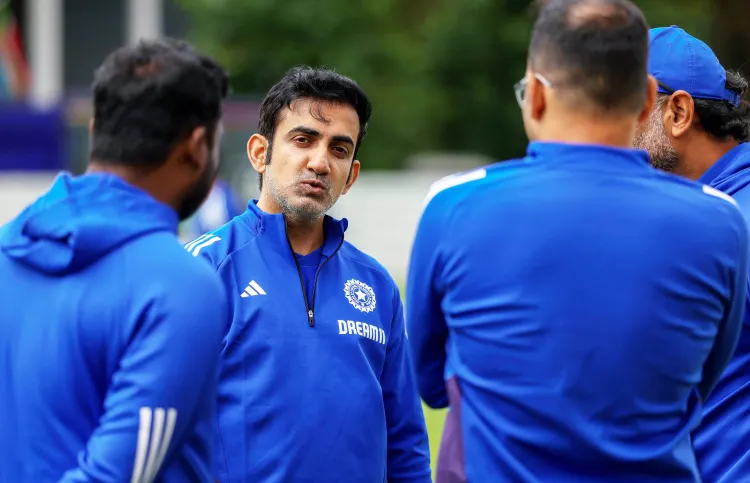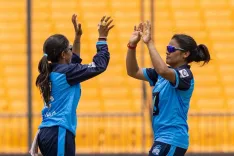What Do Overhead Conditions, Wind Factors, and Pitch Conditions Mean for Success in England, According to Tendulkar?

Synopsis
Key Takeaways
- Respect overhead conditions when batting.
- Understand the impact of wind factors on play.
- Adapt to varying pitch conditions for better performance.
- Focus on solid front-foot defense to minimize dismissals.
- Utilize opportunities to accelerate scoring strategically.
New Delhi, June 19 (NationPress) Achieving success in Test cricket requires young players to excel in England, a country known for its unpredictable weather and varied pitches. The challenges presented by these factors make each Test match session in England truly captivating.
Throughout his illustrious 24-year international career, cricketing icon Sachin Tendulkar found significant success in England, amassing 1575 runs across 17 Test matches with an impressive average of 54.31. His highest score in England was 193 at Headingley in 2002, where he played as Yorkshire's first overseas player in 1992.
As India prepares to embark on their journey for the newly introduced Tendulkar-Gavaskar Trophy at Headingley this Friday, Tendulkar reflected on his rich experiences playing Test cricket in England. He emphasized three crucial elements—overhead conditions, wind factors, and pitch conditions—that are essential for batters aiming for success.
“Certain venues offer immense satisfaction when you perform, and England is undoubtedly one of those places. To thrive in England, it's essential to respect specific game elements: the overhead conditions, wind factors, and temperature, alongside the pitch conditions,” he stated.
“These factors should guide our approach to the game. If the plan is to attack, we must consider these elements carefully. The hardness or softness of the ball, especially the Dukes ball, is crucial; it starts out hard but loses its lacquer after 10 to 15 overs, which then enhances swing,” Tendulkar elaborated.
“This swinging continues for about 50-55 overs before the ball begins to reverse. However, the seam slightly softens, providing batters with extra time to adjust, as the surface's zip decreases.”
“This period is an opportunity to accelerate until the second new ball is introduced after 80 overs, making it necessary for teams to consider the overhead conditions and pitch performance,” he advised during a virtual interaction with IANS.
Tendulkar, a vital member of the 2007 Indian team that claimed a 1-0 series victory in England under Rahul Dravid's captaincy, highlighted the significance of maintaining a solid front-foot defense to counter the opposition bowlers.
“To succeed in England, the most critical factor is how effectively you defend on the front foot. A staggering 80% of dismissals occur when batters are on the front foot, unless they have a glaring weakness against short-pitched deliveries,” he noted.
“While batters tend to play aggressively, it’s essential to respect deliveries that require a forward defense. If your hands move forward and you push at the ball, it could lead to a wicket. Playing close to the body with a solid forward defense will make it much tougher for bowlers to dismiss you,” he concluded.








